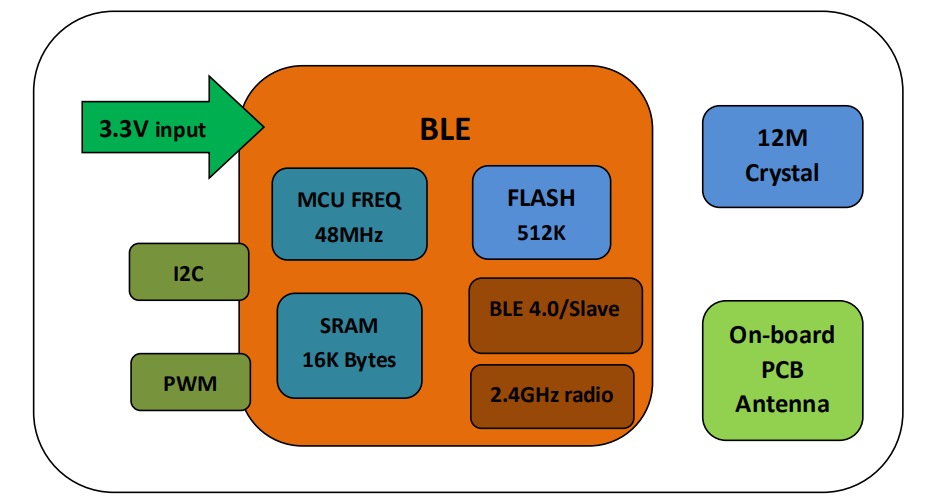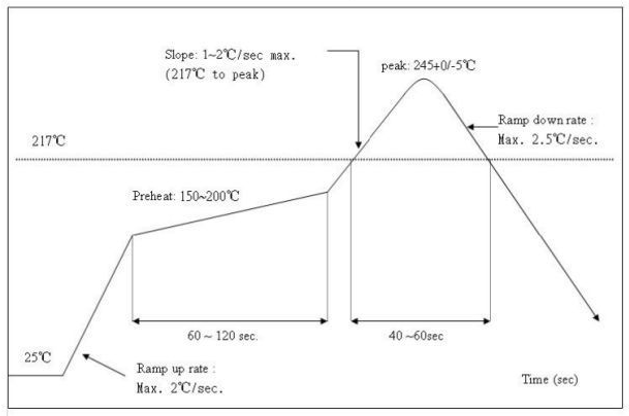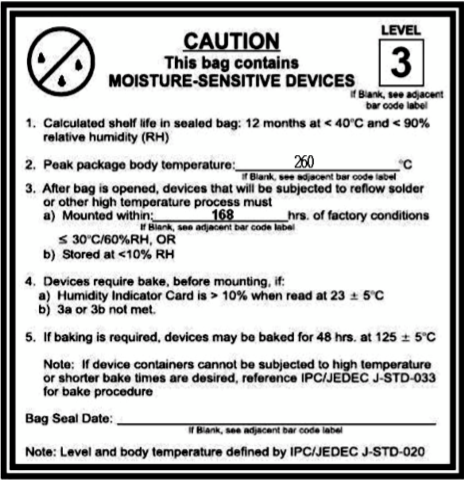TYBT1 Module Datasheet
Last Updated on : 2024-06-14 07:46:41download
TYBT1 is a Bluetooth (Bluetooth LE) module designed by Hangzhou Tuya Technology Corporation, which is designed for outputting LED control signals. The Bluetooth LE module consists of a highly integrated wireless Bluetooth chip TLSR8266 and some extra electric circuits that have been programmed with Bluetooth network protocol and plenty of software examples.
Product overview
TYBT1 includes a 32- bit CPU, Bluetooth LE/2.4G radio, 512K byte flash, 16k SRAM, 5-channel PWM, one I2C, and one UART interface.
Users can customize their LED products by using these PWM signals.
See the following figure for the block diagram of the TYBT1.

Features
- Integrated low power consumption 32-bit CPU, also known as an application processor
- Basic frequency of the CPU can support 48 MHz
- Supply voltage range: 1.9V to 3.6V
- Peripherals: 5PWM,1I2C, 1*UART
- Bluetooth LE RF features
- Compatible with Bluetooth LE 4.0
- Transmitting data rate can go up to 2Mbps
- TX transmitting power: +7dBm
- RX receiving sensitivity: -92dBm
- AES hardware encryption
- On-board PCB antenna
- Operating temperature range: -20℃ to 85℃
Main application fields
- Intelligent LED
- Intelligent household applications
Dimensions and footprint
Dimensions
-
TYBT1 has double sides of pins, a total of 16 pins. The distance between each Pin is 2.0mm.
-
Size of TYBT1: 15mm(W)*17.3mm(L).
See the following figure for the dimensions of TYBT1.

Pin definition
See the following table for the general pin attributes of TYBT1.
| PIN NO. | NAME | TYPE | DESCRIPTION |
|---|---|---|---|
| 1 | 3.3V | P | Supply voltage |
| 2,14 | RX | I | UART RX |
| 3 | GND | P | Ground |
| 4,13 | TX | O | UART TX |
| 5 | CW | I/O | PWM output pin, default for Cold White LED line |
| 6,15 | WW | I/O | PWM output pin, default for Warm White LED line |
| 7 | R | I/O | PWM output pin, default for Red LED line |
| 8,18 | SDA | I/O | I2C, data interface |
| 9 | G | I/O | PWM output pin, default for Green LED line |
| 10,17 | SCL | I/O | I2C, clock interface |
| 11 | B | I/O | PWM output pin, default for Blue LED line |
| 12 | RST | I | Reset pin for the module |
| 16 | SW | I/O | Bluetooth chipset burning pin |
Note: P: Power supply pins; I/O: Digital input or output pins.
If there’s any customization needed for PWM output, please contact the Tuya BD manager.
Electrical characteristics
Absolute maximum ratings
| Parameter | Description | Min | Max | Unit |
|---|---|---|---|---|
| Ts | Storage temperature | -20 | 85 | ℃ |
| VCC | Supply voltage | -0.3 | 3.9 | V |
| Electrostatic release quantity (Human body model) | TAMB-25℃ | - | 2 | KV |
| Electrostatic release quantity (Machine model) | TAMB-25℃ | - | 0.5 | KV |
Electrical conditions
| Parameter | Description | Min | Typical | Max | Unit |
|---|---|---|---|---|---|
| Ta | Temperature for Commercial grade | -20 | - | 85 | ℃ |
| VCC | Supply voltage | 2.5 | 3.3 | 3.6 | V |
| VIL | IO negative level input | -0.3 | - | VCC*0.25 | V |
| VIH | IO positive level input | VCC*0.75 | - | VCC | V |
| VOL | IO negative level output | - | - | VCC*0.1 | V |
| VoH | IO positive level output | VCC*0.8 | - | VCC | V |
Transmitting current consumptions
| Parameter | Mode | Typical | Unit |
|---|---|---|---|
| Itx | Continuously transmitting, 0dBm power output | 13 | mA |
| Irx | Continuously receiving | 13 | mA |
| IDC | Normal working mode | 80 | uA |
Radio specification
Basic radio frequency characteristics
| Parameter | Description |
|---|---|
| Working Frequency | 2.4GHz ISM band |
| Radio standard | Bluetooth LE 4.0 |
| Data transmitting rate | 1Mbps, 2Mbps |
| Type of Antenna | On-board PCB Antenna |
Transmitting power
| Parameter | Min | Typical | Max | Unit |
|---|---|---|---|---|
| RF Average output power consumption | 3.8 | 7 | - | dBm |
| 20dB bandwidth | - | 1000 | - | KHz |
Receiving sensitivity
| Parameter | Min | Typical | Max | Unit | |
|---|---|---|---|---|---|
| RX sensitivity | 1Mbps | -93 | -92 | -90 | dBm |
| Frequency bias error | - | -300 | - | 300 | KHz |
| Co-channel interference Restrain | - | - | -7 | - | dB |
Antenna
Antenna type
The PCB antenna used by TYBT1 is an on-board antenna of 2.4G Wi-Fi frequency band.
Reduce antenna interference
When PCB onboard antenna is used on the module, the distance between the antenna part of the module and other metal devices should be controlled above 15mm. The PCB board should not be wired and copper-clad in the area near the module antenna, and there should be no substrate media directly below or directly above the PCB printed antenna of the module.
Packaging information and production guide
Mechanical dimensions

Production instructions
- Use an SMT placement machine to mount components to the stamp hole module that Tuya produces within 24 hours after the module is unpacked and the firmware is burned. If not, vacuum pack the module again. Bake the module before mounting components to the module.
- SMT placement equipment
- Reflow soldering machine
- Automated optical inspection (AOI) equipment
- Nozzle with a 6 mm to 8 mm diameter
- Baking equipment
- Cabinet oven
- Anti-static heat-resistant trays
- Anti-static heat-resistant gloves
- SMT placement equipment
- Storage conditions for a delivered module are as follows:
- The moisture-proof bag is placed in an environment where the temperature is below 30°C and the relative humidity is lower than 70%.
- The shelf life of a dry-packaged product is six months from the date when the product is packaged and sealed.
- The package contains a humidity indicator card (HIC).

- Bake a module based on HIC status as follows when you unpack the module package:
- If the 30%, 40%, and 50% circles are blue, bake the module for 2 consecutive hours.
- If the 30% circle is pink, bake the module for 4 consecutive hours.
- If the 30% and 40% circles are pink, bake the module for 6 consecutive hours.
- If the 30%, 40%, and 50% circles are pink, bake the module for 12 consecutive hours.
- Baking settings:
- Baking temperature: 125±5°C
- Alarm temperature: 130°C
- SMT placement ready temperature after natural cooling: < 36°C
- Number of drying times: 1
- Rebaking condition: The module is not soldered within 12 hours after baking.
- Do not use SMT to process modules that have unpacked for over three months. Electroless nickel immersion gold (ENIG) is used for the PCBs. If the solder pads are exposed to the air for over three months, they will be oxidized severely and dry joints or solder skips may occur. Tuya is not liable for such problems and consequences.
- Before SMT placement, take electrostatic discharge (ESD) protective measures.
- To reduce the reflow defect rate, draw 10% of the products for visual inspection and AOI before first SMT placement to determine a proper oven temperature and component placement method. Draw 5 to 10 modules every hour from subsequent batches for visual inspection and AOI.
Recommended oven temperature curve
Perform SMT placement based on the following reflow oven temperature curve. The highest temperature is 245°C.
Refer to IPC/JEDEC standard.
- Peak Temperature:<245℃.
8 Number of Times:≤2 times

Storage conditions

MOQ and packing information
| Product Model | MOQ (pcs) | Packing Method | Number of Modules in Each Reel Pack | Number of Reel Packs in Each Box |
|---|---|---|---|---|
| TYBT1 | 4400 | Carrier tape and reel packing | 1100 | 4 |
Appendix: Statement
FCC Caution: Any changes or modifications not expressly approved by the party responsible for compliance could void the user’s authority to operate this equipment.
This device complies with Part 15 of the FCC Rules. Operation is subject to the following two conditions: (1) This device may not cause harmful interference, and (2) this device must accept any interference received, including interference that may cause undesired operation.
Note: This equipment has been tested and found to comply with the limits for a Class B digital device, pursuant to part 15 of the FCC Rules. These limits are designed to provide reasonable protection against harmful interference in a residential installation. This equipment generates, uses, and can radiate radio frequency energy and, if not installed and used in accordance with the instructions, may cause harmful interference to radio communications. However, there is no guarantee that interference will not occur in a particular installation. If this equipment does cause harmful interference to radio or television reception, which can be determined by turning the equipment off and on, the user is encouraged to try to correct the interference by one or more of the following measures:
-
Reorient or relocate the receiving antenna.
-
Increase the separation between the equipment and receiver.
-
Connect the equipment into an outlet on a circuit different from that to which the receiver is connected.
-
Consult the dealer or an experienced radio/TV technician for help.
Radiation Exposure Statement
This equipment complies with FCC radiation exposure limits set forth for an uncontrolled rolled environment. This equipment should be installed and operated with a minimum distance of 20cm between the radiator and your body.
Important Note
This radio module must not be installed to co-locate and operating simultaneously with other radios in the host system except in accordance with FCC multi-transmitter product procedures. Additional testing and equipment authorization may be required to operate simultaneously with other radio.
The availability of some specific channels and/or operational frequency bands are country dependent and are firmware programmed at the factory to match the intended destination. The firmware setting is not accessible by the end-user.
The host product manufacturer is responsible for compliance with any other FCC rules that apply to the host not covered by the modular transmitter grant of certification. The final host product still requires Part 15 Subpart B compliance testing with the modular transmitter installed.
The end-user manual shall include all required regulatory information/warnings as shown in this manual, including this product must be installed and operated with a minimum distance of 20 cm between the radiator and user body.
This device has got an FCC ID:2AFDL-TYBT1. The end product must be labeled in a visible area with the following: “Contains Transmitter Module FCC ID: 2AFDL-TYBT1”
This device is intended only for OEM integrators under the following conditions:
-
The antenna must be installed such that 20cm is maintained between the antenna and users, and
-
The transmitter module may not be co-located with any other transmitter or antenna.
As long as the 2 conditions above are met, further transmitter tests will not be required. However, the OEM integrator is still responsible for testing their end-product for any additional compliance requirements required with this module installed.
Declaration of Conformity European notice

Hereby, Hangzhou Tuya Information Technology Co., Ltd declares that this module product is in compliance with essential requirements and other relevant provisions of Directive 2014/53/EU,2011/65/EU.A copy of the Declaration of conformity can be found at https://www.tuya.com

This product must not be disposed of as normal household waste, in accordance with the EU directive for waste electrical and electronic equipment (WEEE- 2012/19/EU). Instead,it should be disposed of by returning it to the point of sale, or a municipal recycling collection point.
The device could be used with a separation distance of 20cm to the human body.
Is this page helpful?
YesFeedbackIs this page helpful?
YesFeedback





